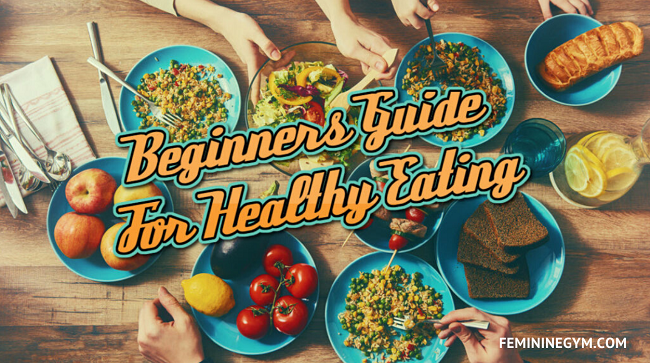The Clean Eating Diet Plan Guide :
When we discuss diet plans we will typically put them along a spectrum where food quantity is on one end and food quality is on the opposite .
Additionally, in direct opposition to diets like IIFYM it imposes guidelines of what sorts of foods to eat and doesn't regulate calories of macros to any meaningful degree.
The main principles of unpolluted eating are centered around that specialize in the standard of the foods you consume and ensuring they're “clean”.
The principles are often summarized in one tenant: Choose whole, natural foods and seek to eliminate processed foods.
When we discuss diet plans we will typically put them along a spectrum where food quantity is on one end and food quality is on the opposite .
Additionally, in direct opposition to diets like IIFYM it imposes guidelines of what sorts of foods to eat and doesn't regulate calories of macros to any meaningful degree.
The main principles of unpolluted eating are centered around that specialize in the standard of the foods you consume and ensuring they're “clean”.
The principles are often summarized in one tenant: Choose whole, natural foods and seek to eliminate processed foods.
The core principles of the diet can be listed as follows:
- Avoid processed foods
- Avoid refined foods
- Avoid artificial ingredients
- Avoid alcohol
- Avoid soda and fruit juice
History of the Clean Eating Diet
As clean eating isn't a well-defined dietary program it's difficult to trace the history of it as a dieting paradigm back to a singular beginning.
As clean eating isn't a well-defined dietary program it's difficult to trace the history of it as a dieting paradigm back to a singular beginning.
One could give credit to the traditional Greek physician Hippocrates who penned one among the primary works on dietary principles and is liable for the famous quote, “Let food by the drugs and medicine be thy food”.
General Overview of Components & Main Principles of The Clean Eating Diet
Clean eating is based on the principle of eating whole, natural unprocessed foods.
It focuses on food quality and not quantity, so calorie counting isn't utilized during this dietary framework.
Meal Timing/Frequency
On principle, clean eating doesn't have strict requirements for meal timing or meal frequency (read: what percentage times each day you eat).
However, in application most clean eating programs suggest people eat 5-6 smaller, clean food, meals and snacks throughout the day instead of 3 main meals.
Restrictions/Limitations
This excludes pastas, breads, crackers, chips, cereals, and anything that has been processed. This approach also excludes things like condiments (e.g. mustards and spreads) also as dressings.
Additionally most beverages are restricted; this includes alcohol, soda, and juice.
Does It Include Phases?
Most prescriptions of the clean eating diet as instantiated in books, articles, and programs have people initiate the complete spectrum of the diet at the outset. Some even include 30 day challenges during which whole, natural foods must be consumed for everything of the 30 days with no deviation from the protocol.
Who Is It Best Suited For?
Clean eating allows substantial flexibility within the amount of food one eats, the timing and frequency, and with some effort and diligence the diet are often used for a good range of individuals with drastically different goals (e.g. fat loss, muscle gain, or sport performance).
How Easy Is It to Follow?
How easy it is to follow the clean eating diet really depends on what type of person you are and your food preferences. For people who enjoy eating a wide variety of food, do not enjoy food restrictions, and would rather focus on the quantity of their food (i.e. the calories and macros) clean eating may be rather difficult to follow.
For people who are creatures of habit, do not mind eating within restricted dietary frameworks and do not enjoy counting their calories of macros clean eating can be an excellent dietary framework to follow.
Most people who practice clean eating long term usually build in small amounts of flexibility and follow either an 80/20 or 90/10 rule where they allow themselves to eat food on the restricted list 10-20% of the time.
Mainstream Belief Behind Diet
The mainstream belief behind the clean eating diet is that natural, whole foods are optimal for human health and that they naturally control calorie intake.
While there are indeed sound reasons behind consuming more natural foods, one cannot truly rely on the “natural” argument as the sole basis for why this diet is effective as the naturalistic fallacy is a common logical fallacy.
Scientific Studies and Interpretation of Data
To date there are no published studies examining the effect of a clean eating diet which makes it difficult to draw hard conclusions on the scientific efficacy of this diet. However, there are a few things we can glean.
Most whole, natural foods are more satiating than their processed counter parts1. This makes controlling calorie intake much easier for a large majority of people.
Additionally, higher diet quality is associated with improved health markers and a lower risk of developing type 2 diabetes
Conclusion
Clean eating falls on the opposite end of the dietary spectrum from approaches like IIFYM or flexible dieting and focuses almost exclusively on food quality, not food quantity.
The main principles of clean eating are centered around focusing on the quality of the foods you consume and ensuring they are “clean”.
The principles can be summarized in one tenant: Choose whole, natural foods and seek to eliminate processed foods.
The core principles of the diet can be listed as follows: avoid processed foods, avoid refined foods, avoid artificial ingredients, avoid alcohol, avoid soda and fruit juice.
References :
- A satiety index of common foods
- Diet-quality scores and plasma concentrations of markers of inflammation and endothelial dysfunction
- Effects of a short-term intervention with a paleolithic diet in healthy volunteers

Comments